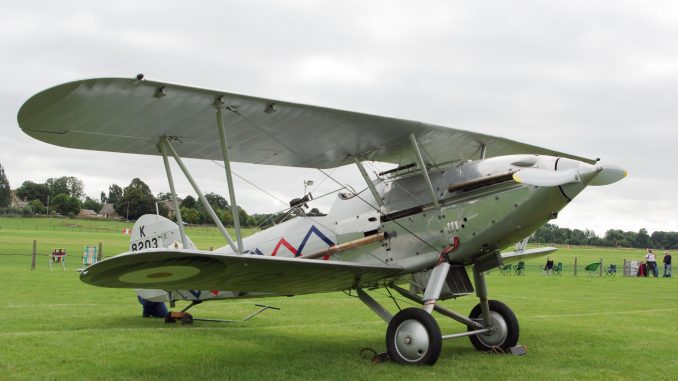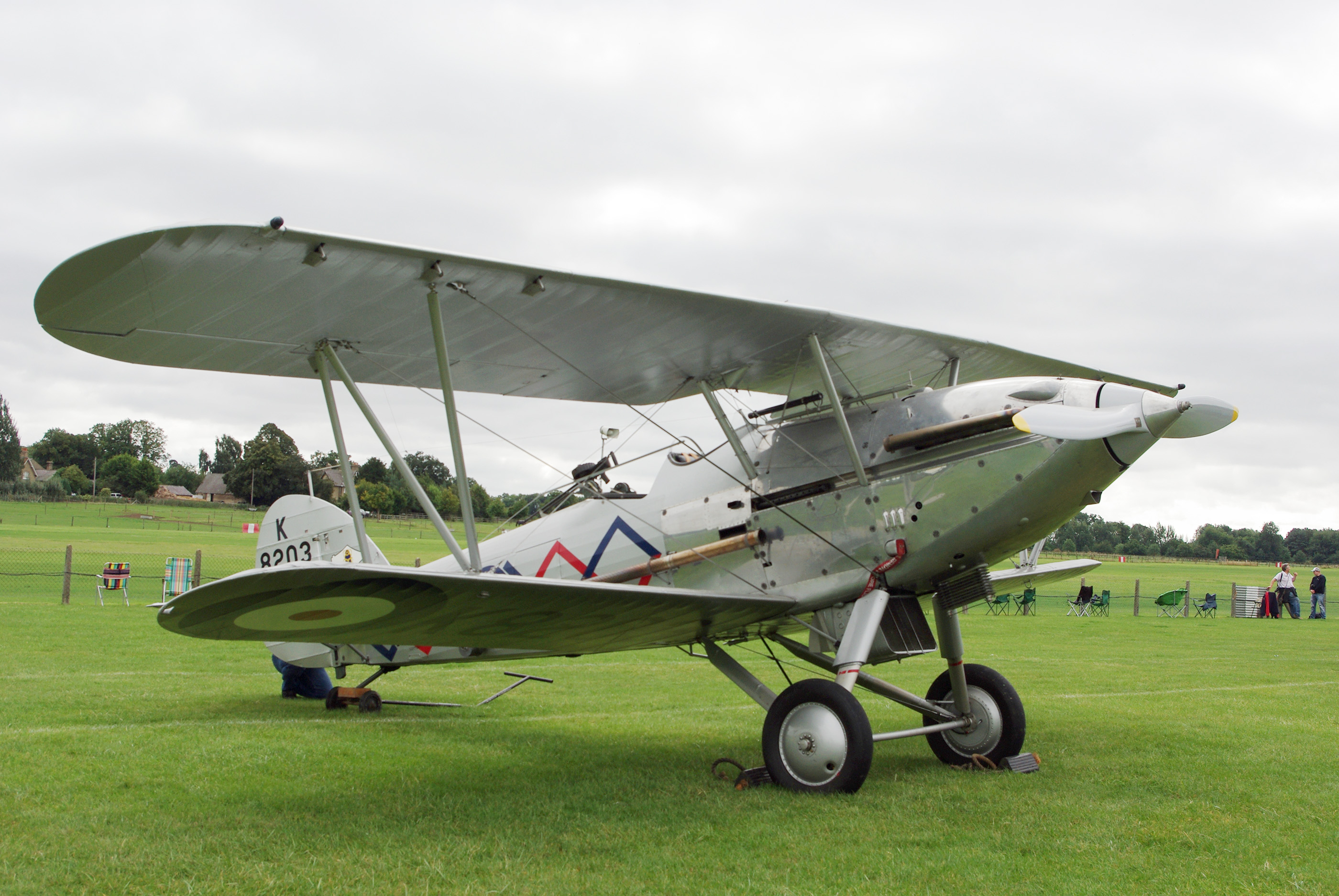

Based upon an article by John Parker of Warbirds Online. All photos via John Parker, unless noted otherwise.
John Parker recently visited Caboolture Airfield in Queensland, Australia. The site is famous around the world for the historic aircraft based or under restoration there, but Parker was specifically interested in a project owned by Jack McDonald. ‘Here there be demons’, well, a Hawker Demon as it happens.
Work continues at an astounding pace on the Hawker Demon project. Much of the work has centered upon rebuilding the tubular steel fuselage structure at present, and bringing together the required parts for the Demon from Jack’s spares holding.
The Hawker Demon fuselage breaks down into three major assemblies – the forward fuselage/engine mount, the cockpit assembly and the rear fuselage. When work commenced on the aircraft earlier in 2014, the fuselage was in one piece with all these assemblies formed into a single structure which was originally restored back in the 1980’s. However a lot of time has passed since then and the aircraft, having moved about from several locations, has suffered as a consequence, meaning that this original work has had to be redone.

A small team led by Ron Lee has been working on the aircraft throughout the later part of 2014, dismantling the old work, and repairing where necessary to an exceptionally high standard. To date, the team has separated and completely dismantled the engine mount, cockpit and rear fuselage and restored them to as new condition. This refurbishment has also included the wooden “Dog house” upper cockpit section which is now fully restored, covered in cloth and painted.

The Hawker practice of connecting steel tubes with joining brackets to form the structure of the fuselage has made the process of dismantling, refurbishment and reassembly relatively straightforward so far. Each tube is removed, cleaned, painted and replaced in the structure. The stainless steel plates, often referred to as ‘fish plates,’ used to join the tubes were cleaned and polished. Most of the tubes were replaced during the last rebuild, so no new ones have been required. However, in the interests of longevity, new nuts and bolts were used throughout the reassembly. Naturally the unique tube rivets also had to be replaced. These rivets are unusual, two-piece items which allow for the rivet to pass through the tube structure, but not to collapse it when they are peened together.

With the three major fuselage subassemblies now rebuilt, the team will shortly join them back together and “true them up” to ensure they are correctly aligned. The process involves cross-bracing the square metal tube assembles with diagonal wires and turnbuckles. These wires are of the same stainless steel aerodynamic variety used on the wings, and are work of art themselves. The turnbuckles adjust the tension on the wires, which is the primary method for aligning the structure.

The rear undercarriage strut assembly has already been refurbished and attached to the fuselage, as have some of the cockpit fittings. The “Dog House” will not be refitted permanently until the cockpit is complete to allow access to the restricted space in that area. Work will now focus on the final assembly of the fuselage and its fit out. While Jack McDonald is rebuilding this aircraft to airworthy standards, it is not clear at present whether it will actually fly or just be a ground-runner. It is a rare type, with just a couple of complete survivors presently extant.

Upon completion of the structure and the fuselage fit out, the team will manufacture the wooden stringers and framework which attach to it to form the basis for the aircraft’s aerodynamic shape. This will then be covered with linen and doped. Work will then turn to building cowlings for the engine bay. The aircraft’s Rolls-Royce Kestrel engine recently arrived at Caboolture. It is apparently in good condition, and will undergo assessment to determine what is required to get it flight-worthy. A fixed-pitch, two-bladed propeller is also available to the project, but it too requires a proper inspection prior to being deemed usable.

The full set of tail feathers was previously rebuilt. The team will assess these components, and repair if necessary before recovering and attaching and to the fuselage. Wheels and landing gear are available for the aircraft. The wheels are already finished and look stunning. The tyres will also be available as they are not a difficult part to source.
With the completion of all the above work, there will be a fully airworthy Hawker Demon fuselage on hand – missing just one thing – Wings!
Work will commence this year on constructing a set of wings for the Demon using many components previously sourced from Australian wrecks and a set of new-build spars made some years ago. The wing construction, whilst not unique, is of itself a challenging task. This work will be undertaken “in house” using Caboolture-based engineers.
No decision has yet been made as to the identity of the aircraft when completed and this may hinge on work being done to identify the wreck which formed the basis of the fuselage.
Only a single Demon is currently flying, this being K8203 formerly of No. 64 Squadron RAF. The Shuttleworth Collection is the current home to this beautiful aircraft. One other complete example resides at the Royal Australian Air Force Museum in Point Cook, Victoria. This is a former Australian example built up from the wreck of A1-8.
WarbirdsNews is extremely grateful to John Parker for this report, and we look forwards to hearing more from him on this amazing project in the future. Please do check out Parker’s excellent site Warbirds Online by clicking HERE.



Be the first to comment
Graphic Design, Branding and Aviation Art